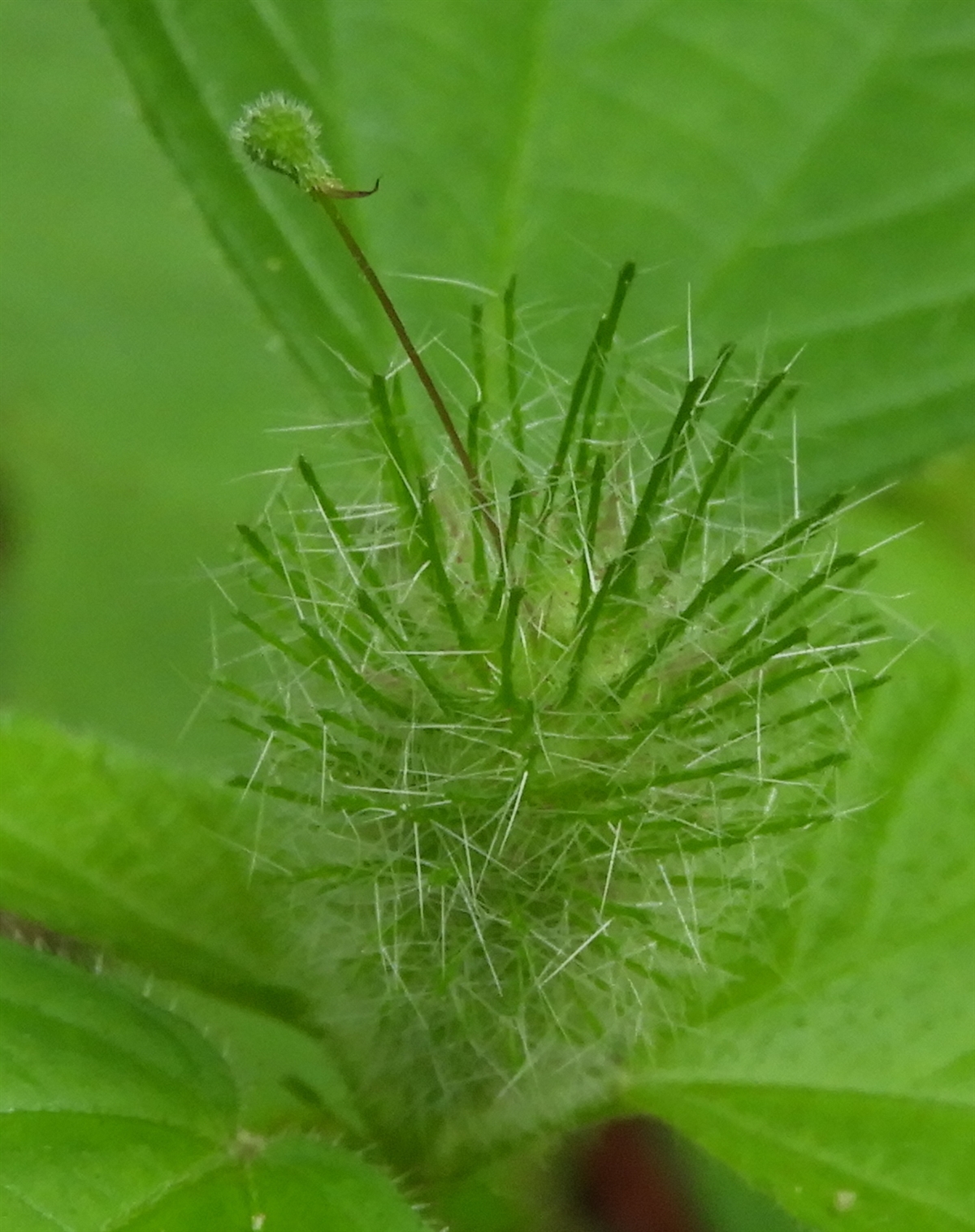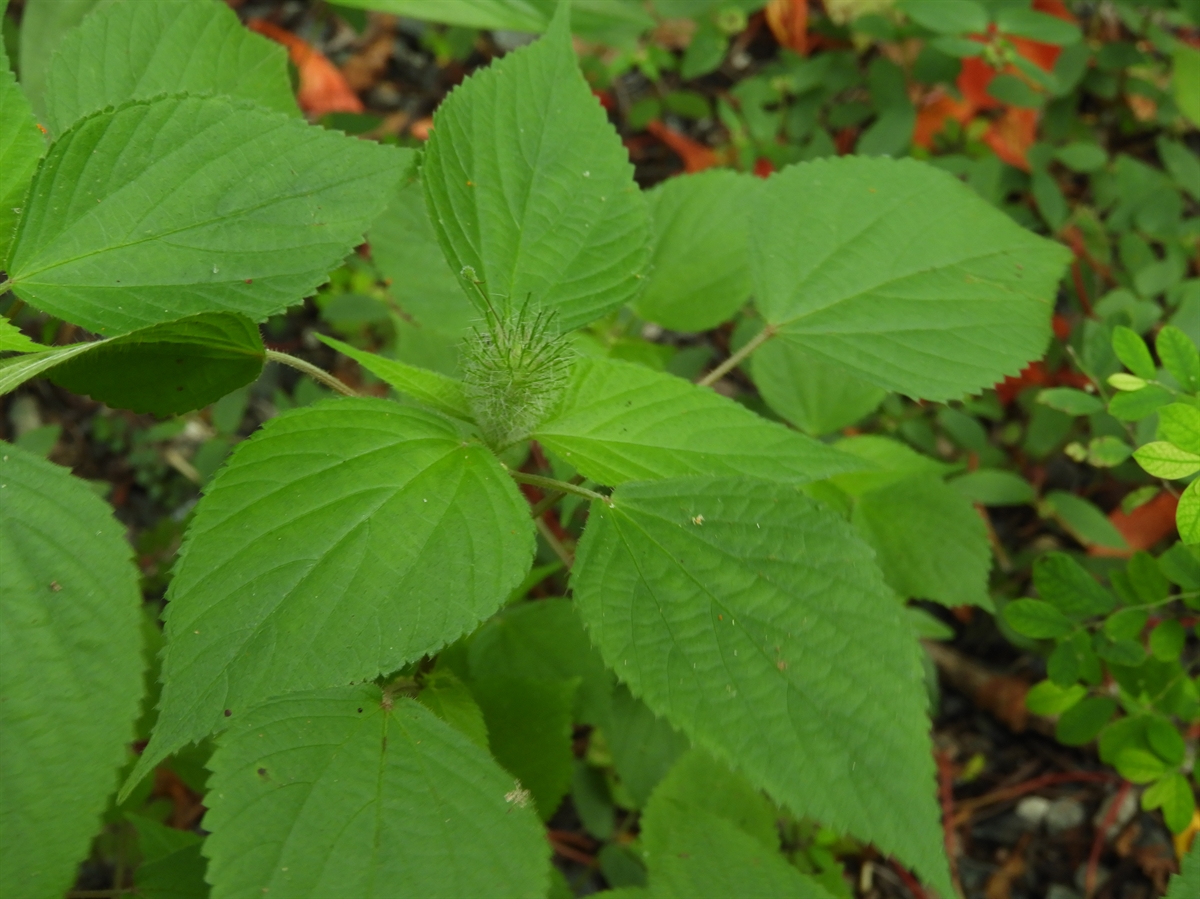Habit: Acalypha alopecuroidea grows as a glandular pubescent annual to 60 cm in height (usually lower). The leaves are arranged alternately, to 10 cm in length, ovate, with a dentate/serrate leaf margin and a cuspidate/acuminate leaf apex and cordate leaf base.
Acalypha alopecuroidea is monoecious and hermaphroditic. The incomplete, imperfect/perfect, actinomorphic flowers are arranged in staminate axillary spikes and carpellate spikes terminal and axillary. In staminate flowers the perianth has 4 green fused at the base pubescent sepals, 8 stamens and no carpel. Carpellate flowers are subtended by numerous bristles, with ovate sepals, no stamens and a superior, pubescent ovary with 3 locules and seeds. The fruit is a capsule.
Habitat: Acalypha alopecuroidea grows in Human Altered environments (yards, waste areas, abandoned fields).
Distribution: Acalypha alopecuroidea occurs throughout the Lucayan Archipelago as well as the Caribbean region, Mexico, Central and northern South America. It now also occurs in the southern United States.
Medicinal/Cultural/Economic usage: Acalypha alopecuroidea is not known to be used medicinally in the Lucayan Archipelago.

